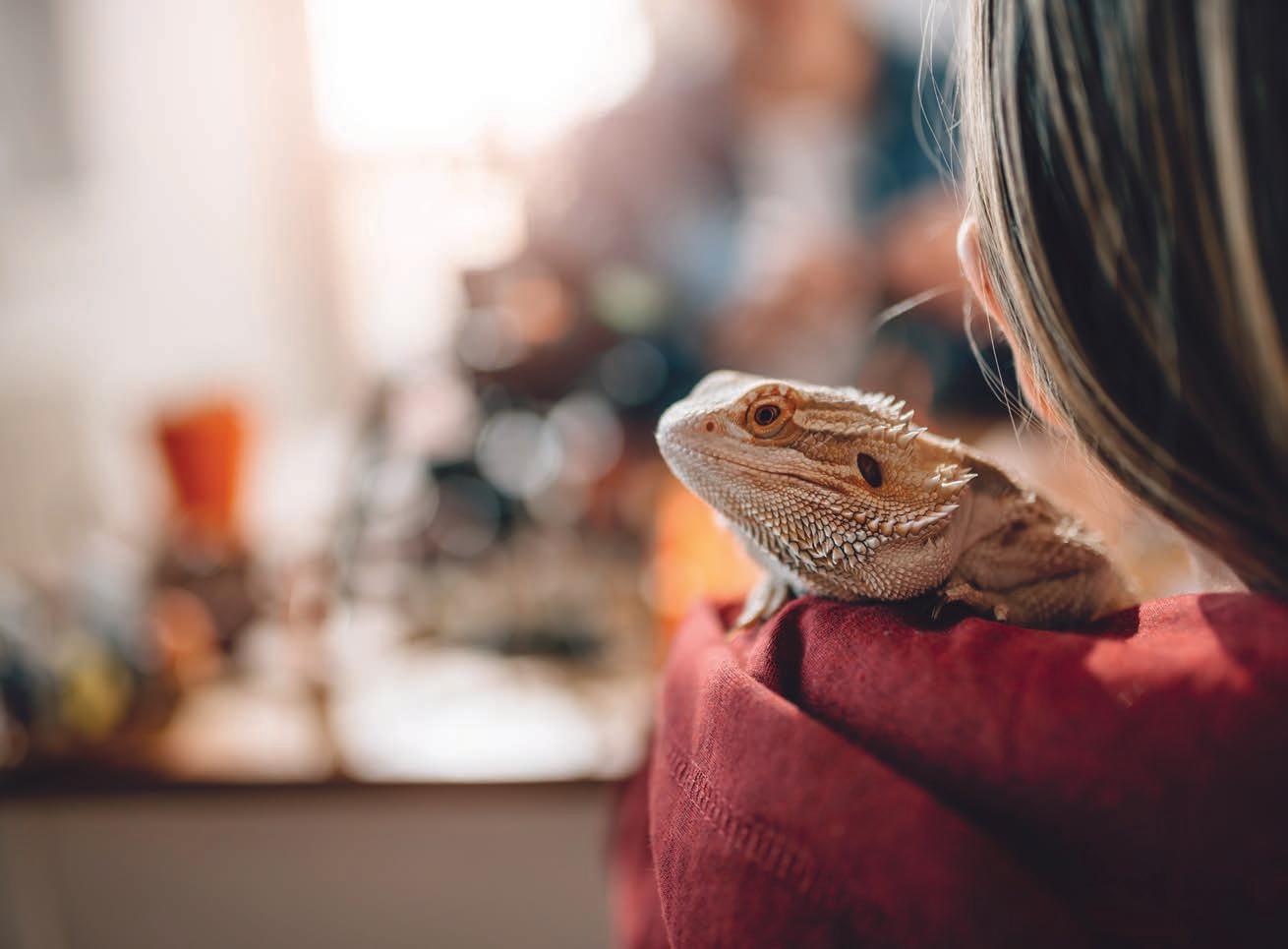
1 minute read
Before You Get A Reptile
from Pet Care
Follow The Rules
There are often rules and regulations about where certain kinds of pets can be kept, including amphibians and reptiles. Check with the management of your property, or contact local wildlife and fisheries personnel to find out more about what is, and isn’t, prohibited in your building or town. Most places won’t allow venomous snakes, for instance.
Advertisement
Smart Choices
A key element in deciding on a reptile is understanding how big the creature will get as it matures. You might not love that cute little Burmese python as much when he’s grown to 30 feet long and up to 200 pounds. The size of your enclosure has nothing to do with how large reptiles will one day become, and that makes doing your research a critical element. The full-grown version is the one you’ll have to share space with, so make sure there’s plenty of it to go around. You also need to discuss your choice with roommates, family or others who may live with you or visit often. You may have to make special accommodations for them.
Living Spaces
Reptiles have specific tempbased needs, so discuss proper heat sources with your local pet store. Aside from temperatures, you’ll also have to monitor the enclosure’s humidity levels, since conditions that are too dry can dry out the skin of these cold-blooded creatures. (In the wild, snakes and lizards burrow deeper or find a new home when conditions become unfavorable.) At the same time, too much moisture can lead to bacteria and fungi growth. Regularly clean their enclosure, since some feces may carry diseases like salmonella. Their tank will need to be large enough so that there is plenty of room to move around. Depending on the reptile, you may have to purchase a larger tank as they grow.
Dinner Time
Pet food stores offer commercially available food blends, but you should understand that many species of reptiles require live food sources. Mice and mealworms are popular food choices for pet owners with carnivorous reptiles. Other kinds of pets eat lots of vegetables. Because all of this food is fresh, it usually needs to be purchased a few times a week.







